Backyard Birds: The Wonder of Warblers
http://www.decor-ideas.org 09/24/2015 20:13 Decor Ideas
Warblers. Where does one begin? There are so many to choose from, with over 50 species calling North America home. Their coloration, migration, secretive behavior and flair for the spectacular make them an object of fascination amongst birders and nonbirders alike.
The yellow-rumped warbler is one of the most ubiquitous warblers in North America, with its late migration in September. And, depending on where you live, your yellow-rumped warbler may look very different than a yellow-rumped spotted elsewhere in the United States. Keep reading to learn more about these small, diverse and dynamic feathered creatures.
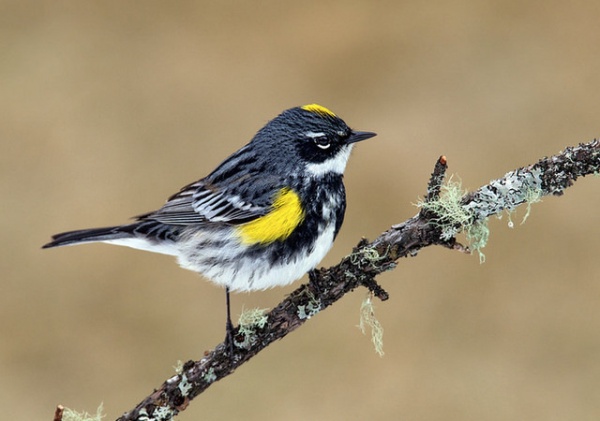
Order: Passeriformes
Latin name: Setophaga coronata
Common name: Yellow-rumped warbler
Distribution: At some point in the year, this species of warbler can be spotted in every U.S. state, including Alaska
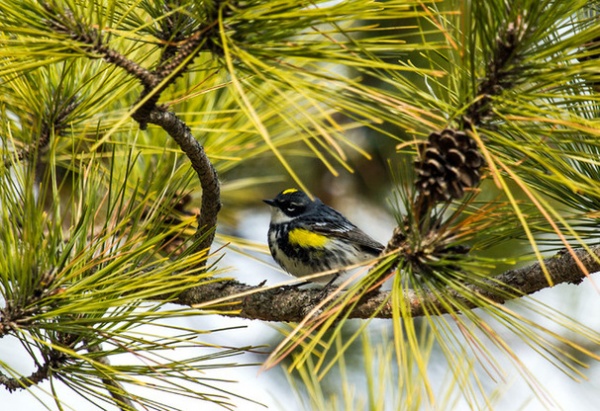
Habitat: For summer breeding, these birds prefer coniferous forests or areas along the edges of evergreen habitats. They can be found in and around mixed forests and deciduous forests but prefer nesting in conifers, such as hemlock, spruce, white cedar, pine, fir and larch. Habitat for winter foraging includes shrubbier areas or open mixed forests where they can forage for berries, which is their food of choice during the winter. They are even known to rest in residential parks that provide access to valuable native food resources.
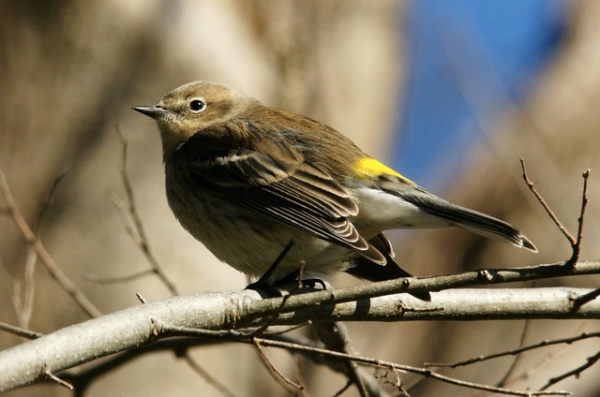
When to look for them. During the winter, yellow-rumped warblers can be found in many of the southern states across the U.S. Some spend their winters in Mexico, the Caribbean Islands or Central America. Summer finds them migrating north, with individual birds stopping to mate as far south as northern Arizona and New Mexico, while others head up to Canada and Alaska. Northern states in the East, Midwest and West are lucky enough to see these birds with their breeding plumage. Most areas in the central Midwest have to catch these birds during their migration times.
How to spot yellow-rumped warblers. Yellow-rumped warblers, like many songbirds, have distinctive coloring during winter and breeding season. The summer breeding plumage has bright streaked patterns of blue-gray, black, white and hints of yellow. Winter results in a less stunning combination of black, gray, white, yellow and olive brown. The distinctive patch of yellow found on their rump, present in both male and females in winter coloration, is the inspiration for their common name. In the summer, both sexes maintain a flashy yellow rump, while the males reveal the more vibrant blue, black and gray coloration.
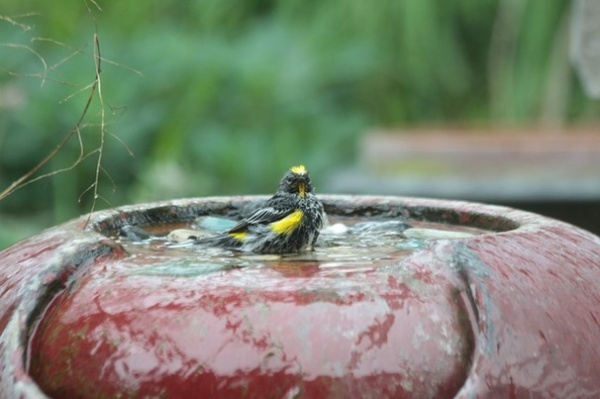
One of yellow-rumped warblers’ more distinctive features is the regional color variations in two subspecies. Male and female Audubon’s yellow-rumped warblers, found mostly in mountainous parts of the western United States, have a bright yellow throat patch during breeding, shown here. Female Audubon’s warblers also have a gray face but with less black masking.
Photo by devra
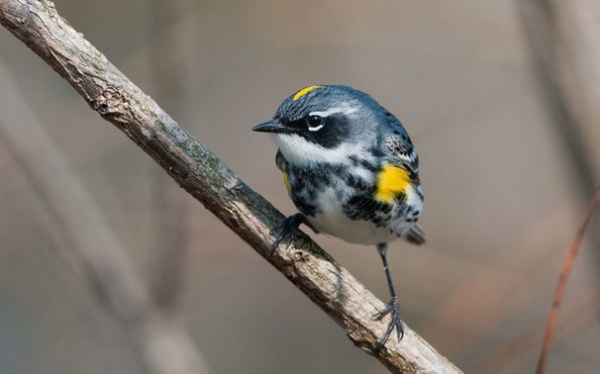
Myrtle yellow-rumped warblers are most commonly found in the eastern United States and Canada, and sport a white throat in both the male and female breeding plumage (male shown here). Females have darker shading around their eyes during breeding season.
In areas where these subspecies overlap, such as the central Canadian mountains, there are slight variations of feather patterns found in Myrtle and Audubon’s yellow-rumped warblers, making for some wild color variations.
Photo by Kelly Colgan Azar
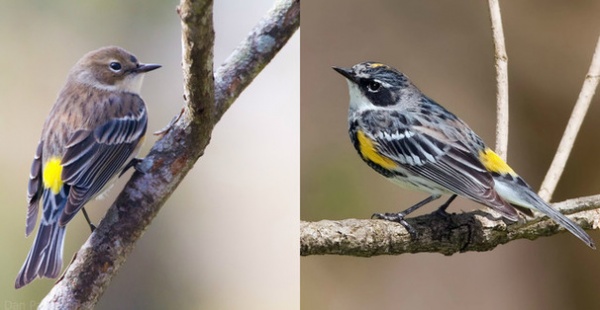
Males and females have similar color patterns in the winter, when they molt to brownish, olive markings with remnants of their black, white, gray and yellow from summer — this is true of both the Myrtle and Audubon’s subspecies. In the summer, females of both subspecies have less black masking patterns on their faces, a more distinct yellow rump and generally less vibrant plumage compared to their male counterparts.
Shown: Female yellow-rumped warbler on the left and male yellow-rumped warbler on the right
Photo by Dan Pancamo, left, and Kelly Colgan Azar
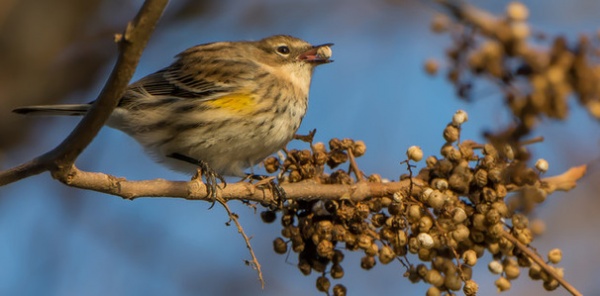
How to Attract Yellow-Rumped Warblers
Yellow-rumped warblers’ dietary preferences vary by season. In the winter the birds mostly consume fruit and seeds. This is one reason they migrate a bit later than other songbirds, when fall fruit and seeds are readily available in native habitats from bayberry (Morella spp.), wax myrtle (Morella cerifera), goldenrod (Solidago spp.), sunflowers (Helianthus spp.), juniper berries (Juniperus spp.), poison ivy, Virginia creeper (Parthenocissus quinquefolia) and dogwood (Cornus spp.).
Having a variety of fruit- and seed-producing flowers, shrubs and trees in your yard will provide ideal foraging conditions for yellow-rumped warblers during winter migration.
6 Plants for Abundant Winter Berries
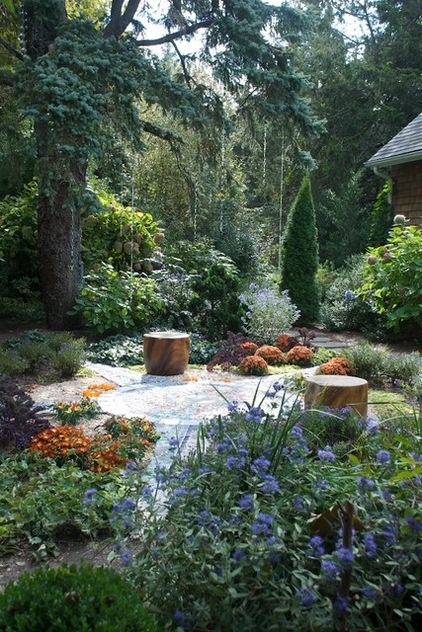
In the summer, yellow-rumped warblers rely on insects as their primary food source, including various caterpillars, leaf beetles, bark beetles, weevils, ants, scale insects, aphids, grasshoppers, caddisflies, crane flies and gnats. They can frequently be spotted in aerial displays catching their favored three-segmented meals.
Providing gardens dense in native plants that support native insects will increase your chances of having these little birds visit you during summer breeding season. Perhaps if your yard provides enough native habitat to support insects, they will establish a nest on your property.
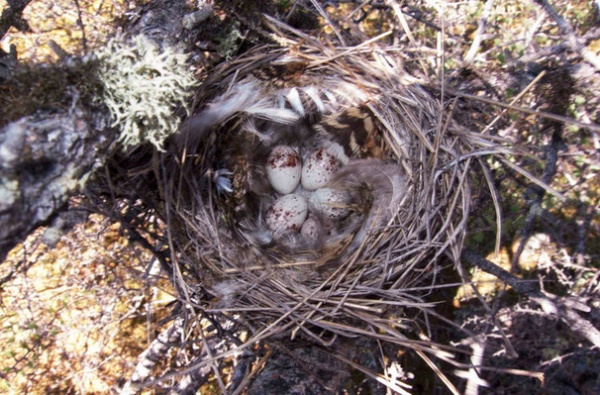
Females are the primary nest builders, and they will usually pick a coniferous tree with a forking of two to four branches to provide support for their nest. Occasionally yellow-rumped warblers will construct a nest in a deciduous tree, but this is not common. Various materials, such as pine needles, animal hair, lichen and grasses will be used in the project, resulting in a 3- to 4-inch-diameter nest that is about 2 inches deep. Most mating pairs will have one to two clutches, composed of one to six eggs each.
What to Know About Birds Nesting in Your Yard
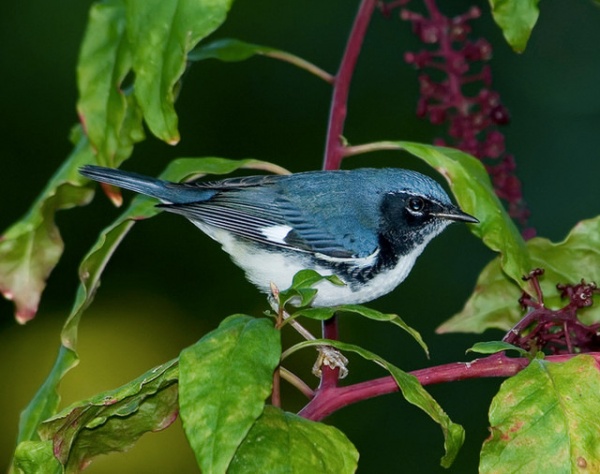
Other Warbler Species
Many other warbler species call the West or East home. Here we’ve chosen two standouts — the black-throated blue warbler (S. caerulescens) for the East Coast and the hermit warbler (S. occidentalis) for the West Coast — to showcase the splendid diversity of these birds. Both of these species are frequently seen breeding in the summer or migrating through during fall and spring on their respective sides of the country.
Black-throated blue warbler. Black-throated blues are common in eastern U.S. forests, where they prefer the dense, deep centers of mature forests. Males are a remarkable deep, rich slate-blue color, shown here. Females have a nondescript coloration of olive brown and gray. They are so different in coloration that originally they were thought to be two different species. Black-throated blues forage on insects and fruit, so having gardens rich in native habitat will increase your odds of having this visitor in your yard.
How to Find the Right Native Plants for Your Yard
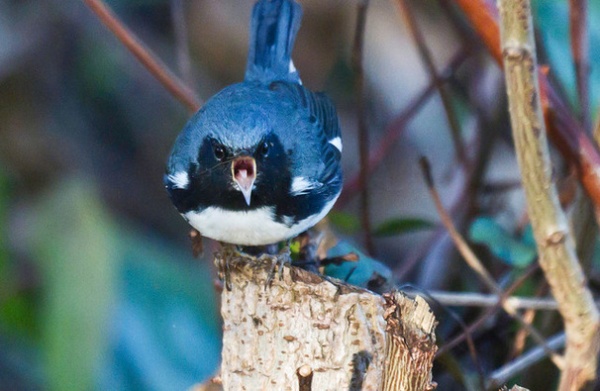
The reforesting of many areas in the East has resulted in the stabilization of this bird’s population, compared to earlier centuries, when many eastern forests were cleared for agriculture. On your next walk in the woods, listen for the sweet call of these birds. As with all warblers, you are much more likely to hear them than catch a glimpse of these small, private, treetop-dwelling, quick-flying birds.
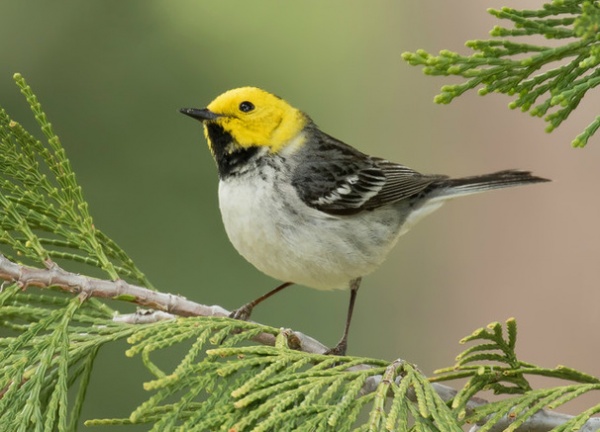
Hermit warbler. Hermit warblers hug the west coast of California, Oregon and Washington and breed in the tallest trees on earth — old-growth conifers. They spend the winter in Mexico and Central America. Males have bright yellow heads with a black throat and a black patch on the back on the neck, as shown here. Females sport a less vibrant yellow head with streaks of olive on the top and behind their eyes. Both males and females have white wing bars against patches of gray-black feathers and a whitish stomach.
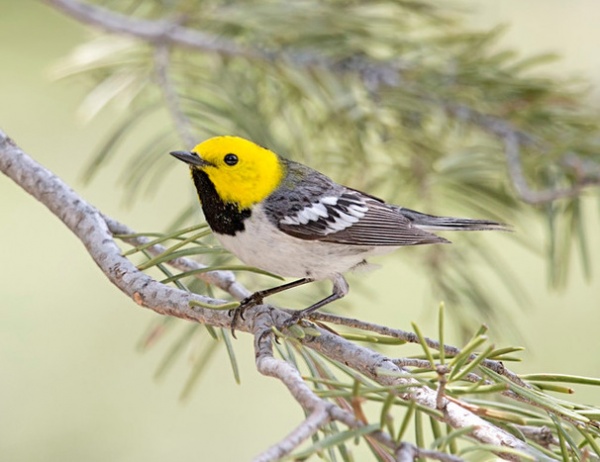
Like the yellow-rumped warbler, the hermit warbler migrates later in the season. See this occurrence map of the hermit warbler’s migration pattern for insight into their timing. Unlike the yellow-rumped, however, these birds consume only insects and can be found foraging along the branches of the conifers they nest in. These birds will sometimes mate with townsend warblers, creating interesting hybrids, in areas where their habitats overlap.
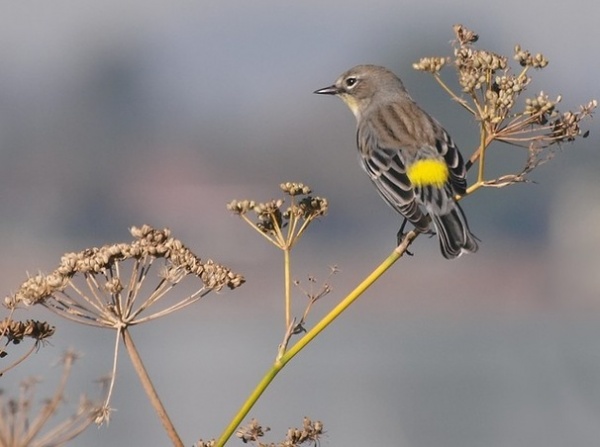
Hungry for more? See and hear different sounds and calls of the subspecies of yellow-rumped warblers, and watch video footage of a foraging female yellow-rumped warbler.
YardMap is a citizen science project developed by the Cornell Lab of Ornithology, designed to cultivate a richer understanding of bird habitat, for both professional scientists and people concerned with their local environment. Thousands of people are documenting their conservation efforts at home to support birds and other wildlife in their yards.
Photo by Ingrid Taylar
Related Articles Recommended












